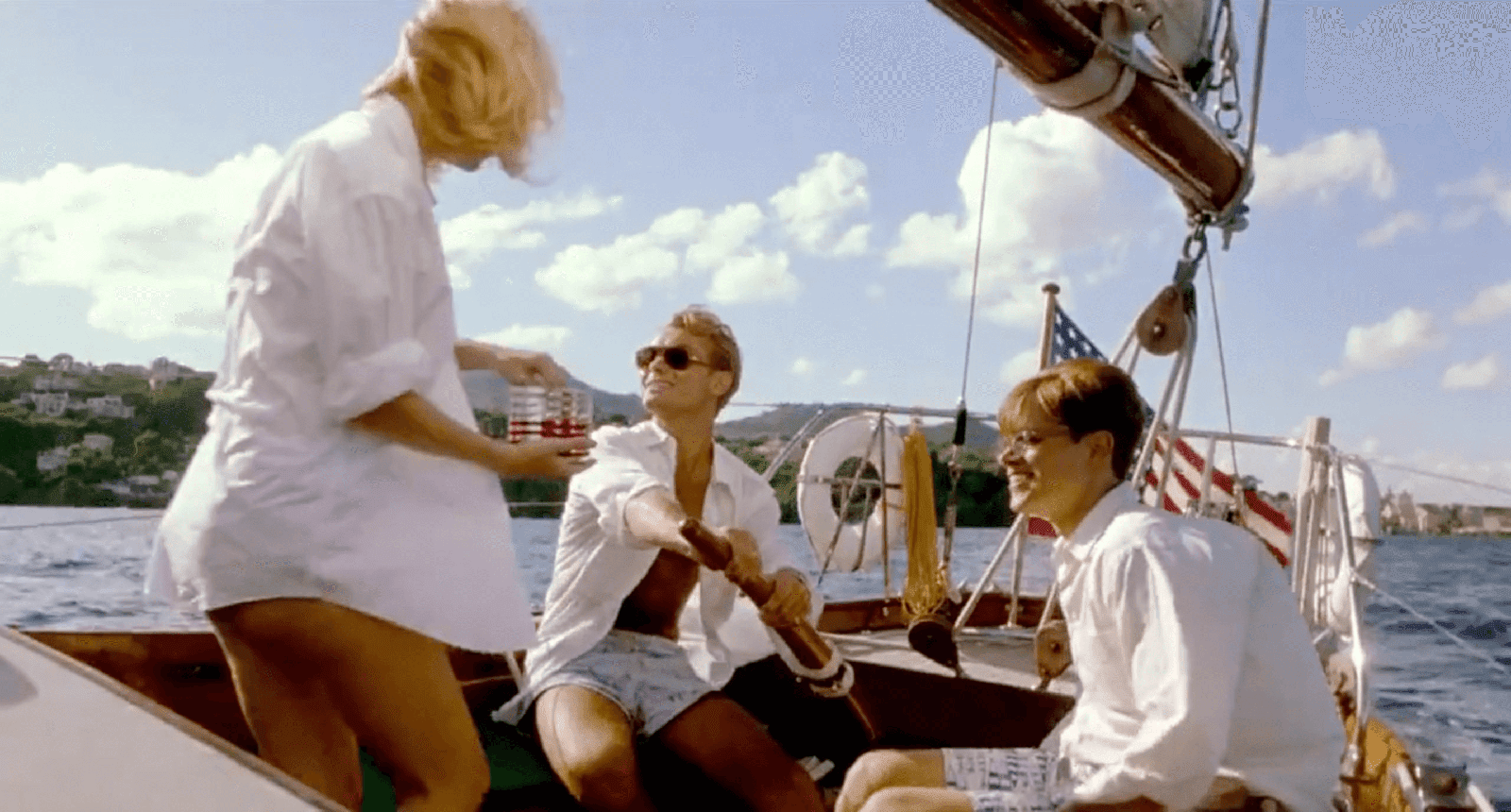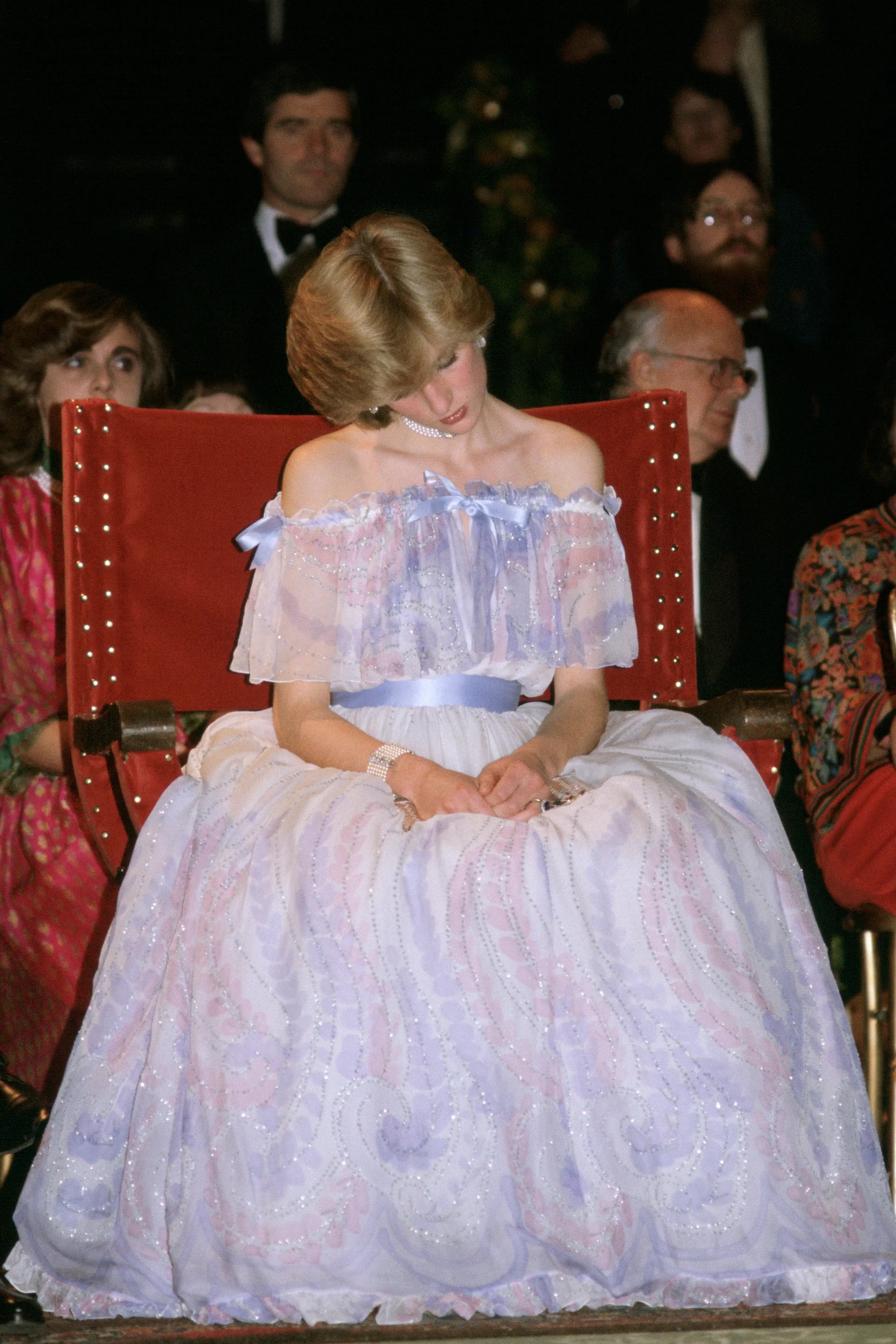
March 28, 2022
Please Hold

December 22, 2021
That Sweet Snooze
DIANA SPENCER DOZING OFF AT A PARTY IN 1981 is all of us at the end of 2021: ready for a snooze. This year has thrown many things our way; some of them comforting, some surprising, though mostly confusing and exhausting as we attempt to carry on with a pandemic still in our midst. Remember when we thought it would last three to four weeks?
While we've had some scientific wins, the World Economic Forum's Global Risks Report lists new and imminent societal threats including youth disillusionment and the erosion of societal cohesion. In spite of this, we end the year with a collectively historic achievement of having streamed Mariah Carey's "All I Want For Christmas is You" over one billion times on Spotify. For emphasis, this Christmas is when we've played the song over a billion times!
November 24, 2021
That Painterly Nature




I FIRST MET ROSANNA AT A ROWDY EAST LONDON PUB, on the evening of the Euro 2020 Final. It wasn't quite the scene in which you'd expect to meet the creator of such delicately designed homeware, but there we were, cheering the night away among avid football fans.
Since then, I quickly became a fan of Rosanna's craft, with its painterly details and uplifting aesthetic. The Rosanna Corfe range comprises sustainably-produced textiles and tableware: cushions, throws, trays, and coasters featuring Rosanna's own hand-painted artwork. My favorite item is the Croc Monsieur woven throw, which is a truly iconic piece depicting a playful crocodile placement print on a beige front, contrasting teal reverse, and made with recycled cotton.
Launched in a year of lockdowns, Rosanna's line is as inspirational as its conception, offering a joyful outlook inspired by nature. Here, Rosanna shares her creative process, and how she stays motivated as an artist and entrepreneur.
LSP: What inspired you to start your own line?
RC: Having time last year during the first lockdown to focus on my own designs and just experiment and paint for fun for the first time in a very long time. It was then my brother who suggested trying out some of these designs on homeware products. Starting my own sustainable textiles / homeware line featuring my own prints was something I had always wanted to do, but didn't think I would have time to do anytime soon. When I then had this extra time during lockdown, I trialled the throws to begin with and once these received a positive response it was motivation to keep going and expand into more products.
LSP: You’ve designed different types of products since launching. Do you have any favourites?
RC: Difficult one but I do love my throws, not only were they the first product to launch on my website but it’s really satisfying to see my designs on a larger scale and also in something that is both a piece of art and functional. I love how the throws translate my painted designs and brushstroke so effectively into a woven tactile item. I really wanted them to preserve the painterly quality from the original artworks and was amazed by how well they achieved this.
LSP: Describe your process. How do your sustainability standards impact or influence your craft?
RC: I very much start with the artwork first. Often my process starts with an idea, composition or sometimes just a colour palette in my head, then comes a lot of experimental painting trying to get this idea onto paper. It usually takes many attempts for me to get an idea just as I envisioned it, but it’s also when making these attempts that I often discover new and exciting processes. A few of my favourite artworks have been somewhat ‘accident’ experimental pieces that have led me on to new ways of creating.
Once I have a design or artwork I like, I focus on what products would best display it. My sustainability standards hugely impact what the products are that I create. Often, I’ll have an idea for a particular design on a particular product but when researching it further, realise that currently it’s not feasible to create this in a sustainable way. Fingers crossed in the future as more businesses focus on being sustainable so this will become less challenging.
LSP: How do you stay motivated as an artist and entrepreneur?
RC: It’s often a bit of a balancing act to stay motivated and inspired as an artist whilst not neglecting all the other aspects that come with running a business. I’m still continuously learning the best ways to stay motivated but having a rough routine and making sure to take breaks when I need them is particularly key for me. I also live for a to-do list and write so many every day, I don’t think I could get much done without them.
Staying inspired is also a fundamental motivator for me and there are so many brilliant, inspiring online resources now as artist / designer, from the V&A online archives to even Instagram and Pinterest. I’ve found Instagram in particular since lockdown, has been an amazing tool in terms of connecting with other creatives and gaining inspiration. I also love looking back at my own previous designs and seeing how my work has evolved and is continually developing. This is a big motivator to keep going as I’m excited to see what I’ll be creating in the future.
LSP: What advice would you give to aspiring creative entrepreneurs?
RC: To not overthink or get too stuck in developing your style too early on. Experiment, have fun and enjoy the process. Focus on creating something you love and the rest will follow.



September 24, 2021
These Poetic Lakes









I loved: morning runs and evening walks by the banks of Bowness-on-Windermere, driving a boat at Ullswater, and swimming at Buttermere.
August 19, 2021
That Wild Lounging



IT WAS ON THIS PARTICULAR SUMMER that I went wild swimming for the first time, which naturally drew me to Rachael Gan's Wild Lounging illustration of a young woman floating in a lake. The illustration forms part of the artist's Summer Series: nine digital illustrations created in summer 2021.
I consider the series Rachael's first body of work reflecting artistic perspective and personal style. Having had the privilege to witness her begin to dabble in illustration, and eventually develop into an illustrator, the collection feels very much like a debut, made with all the buoyant feelings of summer no less.
Here, I chat with Rachael about her craft.
LSP: What inspired you to start illustrating?
RG: I’ve always loved visual art - going to galleries to admire art and discover new artists. And,in my every day realm, appreciating the aesthetic and cleverness of artworks and illustrations in books and magazines.
The turning point in my illustration journey was lockdown 2020. Prior to then, I’d dabbled in art through weekend and evening classes but I identified as more of an art appreciator than a creator. During the lockdown, I found (like many of us) that I had much more free time at home. And with that time, I was motivated to draw more, and create original artworks. I also took a course in Enhanced Illustration through Central St Martins. The frequent practice helped me grow my skillset and confidence to the point where I now think of myself as an illustrator and creator.
LSP: Do you have a favorite medium to work with? Any styles and subjects you gravitate to?
RG: In terms of mediums, I love painting with watercolor for its looseness and unpredictability. I also really enjoy drawing with ink pens. You can’t pause for too long when you’re drawing with ink since it will pool, so the lines are always very fluid and elegant. My other favorite medium is digital - illustrating on an iPad with an apple pencil using Procreate (software), there are just so many possibilities!
In terms of subjects, I gravitate to scenes that evoke joy. The Summer Series of prints I just completed were based on my own excitement this summer for warm days, particularly following our challenging winter lockdown in the UK. With the summer series, I wanted to create scenes that evoked a nostalgia for summers gone and joy for summers to come - with brightness, serenity as well as intrigue.
LSP: Describe your process. How has this differed before, and since the pandemic?
RG: My process is still changing. However, right now, it involves: Deciding on the subject of the illustration. Finding reference images and collaging them into a mood/inspiration board. Then, I’ll roughly draw a few different compositions for the subject, and select the one I like most for the underdrawing of the actual illustration.
Once I’ve decided on the rough composition, I’ll set a target date for completing the work. And then it’s quite an organic process. I’ll draw, paint, and create to complete the work by that date, making decisions and changes as I go. Deadlines help me focus, so I like to set myself timelines even if they’re somewhat arbitrary, both for my own work as well as client commissions.
Lastly, I’ll refine. With a physical work, there’s a limit on the number of tweaks I’ll make once the first pass is done. With digital works, I may continue to tweak for weeks (or months) after.
LSP: How do you stay motivated?
RG: As a new illustrator, I’m still experimenting and working out my style. Setting goals helps me stay motivated. I’ll say to myself "This month, I want to make an NFT." or "Next month, I want to create a large mixed media work." And then I’ll work to do it, often watching lots of youtube/skillshare tutorials to learn techniques, and looking at other illustrators’ work for inspiration and alternative perspectives. I love seeing what other artists and illustrators are creating, both in galleries and on instagram. My social media usage has gone up a lot since I became an illustrator.
LSP: What advice would you give to new artists?
RG: Try all the mediums. Create often. You learn the most through doing. You’re not going to love everything you make. This is advice I also often give myself.
July 26, 2021
That Seaside Thrill








June 18, 2021
This Monochrome Summer



IN JAPANESE ART, BIJIN-GA ARE PICTURES OF BEAUTIFUL WOMEN, usually rendered in woodblock prints predating photography. Many contemporary artists from all over the world put their own spin on the genre, including Japanese illustrator and 1980s icon Ichiro Tsuruta.
Born in 1954 in the Kumamoto Prefecture, Tsuruta majored in graphic design at the Tama Art University in Tokyo. Hyperrealism was the trend at the time and he proceeded to create artwork in the style.
Tsuruta achieved fame in the late 80s when his work sparked a “Cosmetic Renaissance” through advertisements for Japanese cosmetics brand Noevir. Over the next decade, Tsuruta's bijin-ga found themselves on national TV and in Japanese publications, eventually too in international galleries.
With a focus on female beauty, Tsuruta's illustrations naturally feature the face, but also place an emphasis on hands and accessories. As such, I found them fitting inspiration for my own content with British jewellery brand Estella Bartlett.



May 18, 2021
That Sculpted Space










April 28, 2021
That Strong Staple






